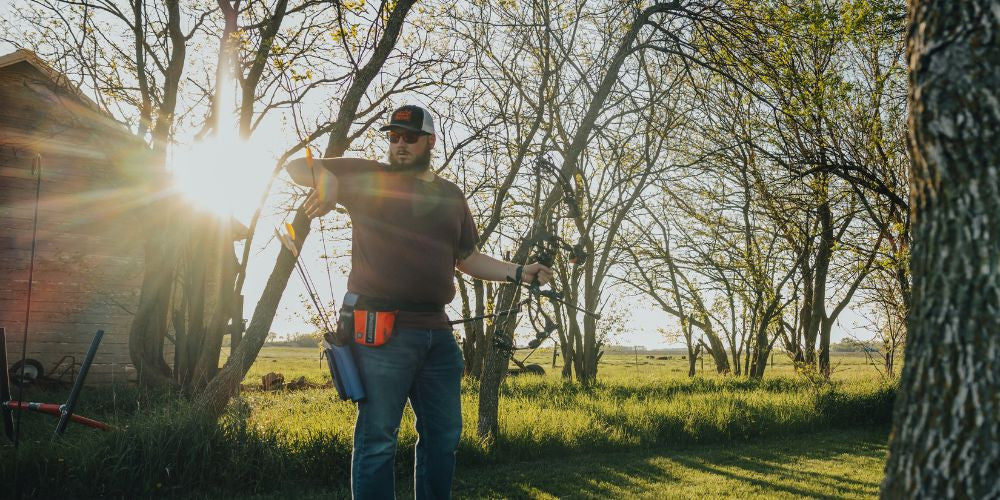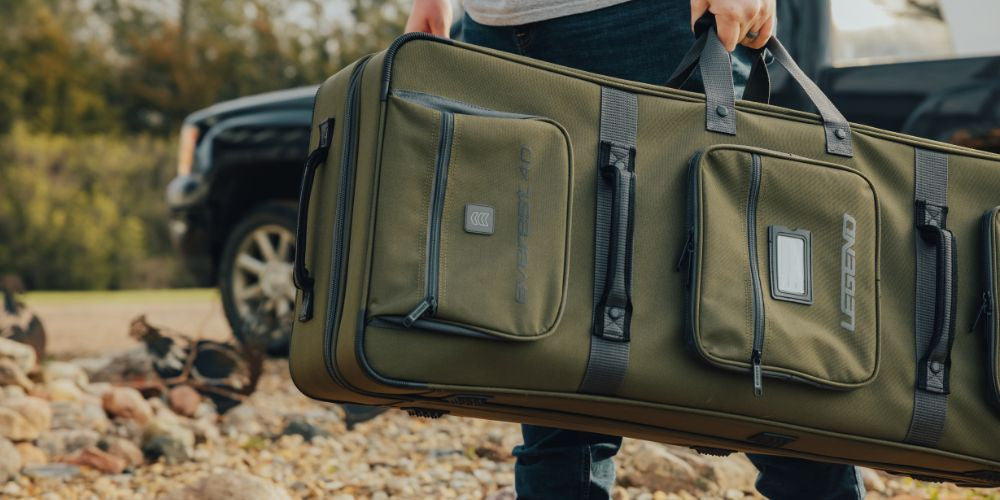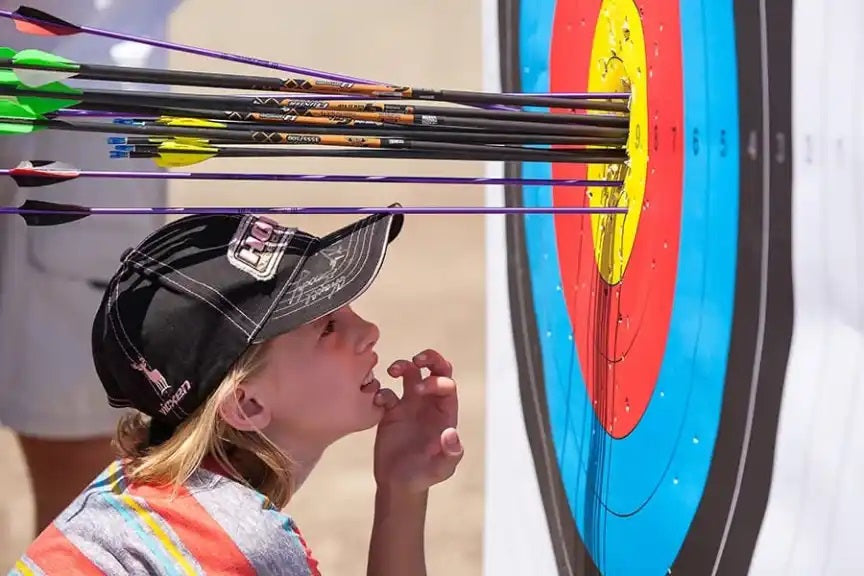When it comes to archery, one of the most important skills to master is accuracy. One of the best ways to measure your accuracy is through the grouping of your arrows. Tightening your arrow groups can lead to better accuracy and, ultimately, better performance. In this article, we will discuss some handy tips to help you tighten your arrow groups and improve your accuracy.
A Break Down Of Useful Tips For Tighter Arrow Groups
If you're looking to tighten your arrow groups, here are some useful tips to consider:
Go for the Right Equipment
Selecting the right equipment is crucial for achieving tight groups and improving your accuracy in archery. Proper equipment will not only help you shoot more accurately, but it will also make the overall archery experience more enjoyable. Here are some tips for choosing the right equipment:
Choose the Right Bow

Choosing the right bow is the first step in choosing the right equipment. There are several types of bows to choose from, including recurve, compound, and longbow. Each type has its own advantages and disadvantages, so it's important to choose the one that best suits your needs and preferences and has the most comfortable draw weight and draw length.
Recurve bows are a popular choice among beginners and are known for their simplicity and ease of use. They are also relatively affordable compared to other types of bows. However, recurve bows require more physical strength to shoot accurately and can be less forgiving if you make a mistake.
Compound bows, on the other hand, are more complex and require more maintenance than recurve bows. However, they offer greater accuracy and are more forgiving if you make a mistake. A compound bow will also allow you to shoot at higher speeds, making them a good choice for hunting or target shooting.
Longbows are another option, and they are known for their simplicity and elegance. They require more skill and practice to shoot accurately, but they offer a more traditional archery experience.
When choosing a bow, consider your skill level, shooting style, and intended use. Test out different types of bows before making a purchase to see which one feels most comfortable for you.
Choose the Right Arrows

Choosing the right arrows is just as important for achieving tight groups as choosing the right bow. Arrows come in different materials, lengths, and weights, and choosing the right one can have a significant impact on your accuracy.
Carbon arrows are a popular choice among archers due to their durability, consistency, and accuracy. They are also lightweight, making them faster and flatter-shooting than other types of arrows.
Aluminum arrows are also a good choice and are known for their consistency and affordability. They are heavier than carbon arrows, making them slower but more stable in flight.
Wooden arrows are a traditional option and offer a unique feel and sound when shot. They require more maintenance and are less consistent than other types of arrows, but they can be a good choice for traditional archery.
When choosing arrows, consider your bow's draw weight and length, your shooting style, and your intended use. Your arrow weight and length should match your bow. You should also test out different types of arrows to see which ones work best with your bow.
Accessorize Appropriately

Choosing the right accessories can also improve your accuracy and help achieve tighter groups. Some accessories to consider include:
- Sight: A bow sight can help you aim more accurately by providing a reference point for your eye. There are several types of sights to choose from, including fixed pin, adjustable pin, and single pin.
- Arrow rest: An arrow rest supports the arrow while it is being shot and can improve your accuracy by keeping the arrow stable during the shot.
- Stabilizer: A stabilizer helps reduce bow vibration and improves balance, leading to more accurate shots.
- Release aid: A release aid can help improve your release technique and lead to tighter arrow groups.
When choosing accessories, consider your shooting style, skill level, and intended use. Test out different accessories to see which ones work best for you, and you'll be well on your way to achieving tighter groups.
Consistent Form
Consistent shooting form is critical to tightening your arrow groups and improving your accuracy in archery. Consistent form means repeating the same shooting technique every time you shoot, regardless of the circumstances. Here are some tips for maintaining consistent form in more detail:
Maintain A Proper Stance

Proper stance is essential for maintaining balance and stability during the shot. A proper stance begins with standing perpendicular to the target with your feet shoulder-width apart. Your weight should be evenly distributed on both feet, and your body should be aligned with the target. Your head should be facing forward. Additionally, your body posture should be relaxed and upright.
Avoid Death Grips

A proper grip on the bow ensures that you maintain control of the bow during the shot. Your fingers should wrap around the bow grip, and the bow grip should be placed in the palm of your hand. Your thumb should point down the bow towards the target. You should have a consistent grip, and the grip pressure should be consistent, neither too tight nor too loose, and should be held throughout the shot.
Proper and Consistent Anchor Point

A proper anchor point is essential for maintaining consistent form, and it also helps in aiming accurately. The anchor point is the spot on your face where you draw the bowstring back to every time you shoot. To achieve a consistent anchor point, you need to choose a reference point on your face, such as your cheek or chin. The bowstring should lightly touch the same spot on your face every time you shoot. This helps in achieving the same draw length and aiming point every time, resulting in consistent groups.
A Smooth Release

A proper release is crucial for tightening your arrow groups and reducing unwanted movement. Your release should be smooth and controlled, with no jerking or flinching. You should relax your fingers and let the bowstring slip out of your fingers. The release should be a surprise, meaning that you should not anticipate when it will happen. This helps in achieving a smooth and consistent release.
Consistent Practice
Developing muscle memory takes consistent practice and is essential for maintaining consistent form. The more you practice, the more your shooting technique will become automatic and the less likely you are to deviate from your proper form. Make sure to practice regularly to build muscle memory and focus on maintaining consistent form. Start by shooting at a short distance and gradually move back as you become more comfortable. Also, it is essential to practice in various conditions like different lighting, weather conditions, and terrain.
Proper Shooting Environment

The shooting environment can have a significant impact on your accuracy in archery. Proper shooting environment involves ensuring that you have the right conditions to shoot in and that you are shooting in a safe and controlled environment. Here are some tips for creating a proper shooting environment:
Proper Lighting
Proper lighting is essential for creating a conducive environment for archery. The lighting should be bright enough to see the target clearly, but not so bright that it causes glare or reflection. If you are shooting indoors, use artificial lighting that simulates natural light. If you are shooting outdoors, avoid shooting directly into the sun, and try to shoot when the sun is low in the sky, such as early morning or late afternoon.
Safe and Controlled Environment
Safety should always be a top priority when shooting. Make sure that you are shooting in a safe environment that is free from obstructions and that you have a clear line of sight of your target. Ensure that your arrows have enough clearance from the ground or any other objects and that there is no one in the line of fire. If you are shooting indoors, ensure you have a proper backstop to catch any missed shots. If you are shooting outdoors, make sure that you are shooting in an area that is designated for archery and that you follow all the safety rules and regulations.
Comfortable and Consistent Temperature
Temperature can also affect your accuracy in archery. Your body needs to be comfortable and relaxed to maintain consistent form and shooting technique. If it is too cold or too hot, your body may tense up, causing you to shoot inaccurately. Therefore, it is essential to choose a comfortable and consistent temperature to shoot in. If you are shooting indoors, ensure that the temperature is comfortable and consistent and that you are not shooting near any heating or cooling vents. If you are shooting outdoors, try to avoid shooting during extreme temperatures, and make sure to dress appropriately for the weather.
Minimal Wind
Wind can have a significant impact on your accuracy in archery. Even a slight breeze can cause your arrows to drift off course. Therefore, it is essential to shoot in an environment with minimal wind. If you are shooting outdoors, try to shoot during a calm day or find a sheltered area protected from the wind. Additionally, it is essential to pay attention to the direction of the wind and adjust your aim accordingly.
Distraction-Free Environment
Distractions can also affect your accuracy in archery. Ensure you are shooting in an environment free from distractions, such as noise or movement. If you are shooting outdoors, try to find a secluded area away from people and traffic. If you are shooting indoors, try to avoid shooting near any distractions, such as televisions or loud music.
Seek Expert Advice

If you are struggling to tighten your arrow groups, seeking expert advice can help - regardless of whether you're into recreative or competitive archery. An experienced archery coach or instructor can help you identify areas for improvement and develop a plan, including an off season shooting regimen to improve your accuracy. Even experienced archers can benefit from the guidance of a coach or mentor who can help them refine their technique and improve their shooting skills.
There are several sources of expert advice in archery that you can turn to when looking to improve your skills. These sources include:
Certified Coaches

Certified coaches are trained and certified by national or international archery organizations to provide expert advice and instruction in archery. They have completed specialized training in archery technique, safety, and coaching methodology and are knowledgeable in all aspects of the sport. You can find certified coaches through national archery organizations, local archery clubs, or online directories.
Professional Archers
Professional archers are individuals who have achieved a high level of success in the sport of archery and can provide expert advice on technique, training, and competition. They can offer insights into the mental and physical aspects of archery, as well as provide guidance on equipment selection and maintenance. You can find professional archers through online forums, social media, or by attending archery events and competitions.
Archery Clubs

Archery clubs can be a great source of expert advice for archers of all skill levels. They often have experienced archers who are willing to provide guidance and instruction to beginners as well as more advanced archers. They may also host clinics, workshops, or competitions that provide opportunities to learn from expert archers and coaches.
Online Resources
There are numerous online resources that can provide expert advice on all aspects of archery, including technique, equipment, training, and competition. These resources include online forums, blogs, instructional videos, and social media groups. However, it is important to be cautious when relying on online resources and to verify the credibility of the source before following any advice.
Conclusion

In conclusion, tightening your arrow groups is an entire process requiring a combination of proper equipment, consistent form, regular practice, a proper shooting environment, and seeking expert advice when needed. By following these handy tips, you can improve your accuracy and become a better archer. Remember, practice makes perfect!
 cust@legendarchery.com
cust@legendarchery.com 302 503 5767
302 503 5767 Whitestown, In 47075
Whitestown, In 47075




